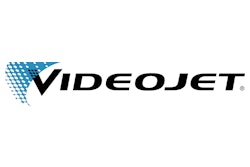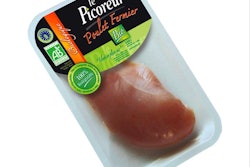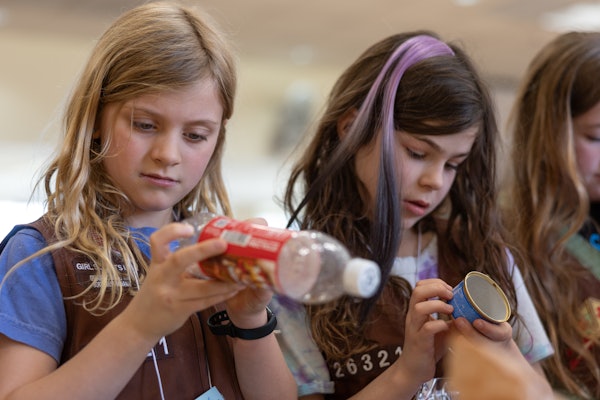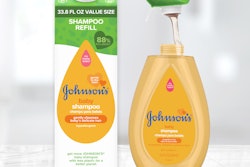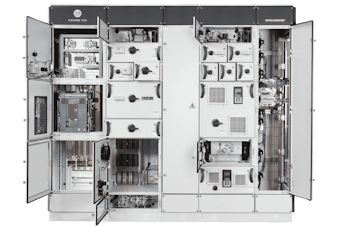At Campina, better automation was required. Sleeving and tray packing of pudding cups took a big step forward in 2007 at the Gütersloh, Germany, plant of Campina GmbH, a dairy company based in the Dutch town of Zaltbommel. That was the year Campina installed a SetLine multipacker/tray packer from Oystar A+F (www.oystar.afautomation.com).
Dessert pudding cups like the ones Campina fills at Gütersloh are enormously popular in Germany. Historically they are offered to the German consumer in a single-cup format. But recently, the idea of a multipack has caught on in a big way, and Campina’s purchase of the SetLine is in response to that trend. According to Christian Koschorreck, engineering manager at the Gütersloh plant, he and his team first saw the sophisticated piece of packaging equipment when A+F introduced it at Anuga Food Tec in Cologne. “We could see right away that it was what we were looking for,” says Koschorreck.
He notes that what it replaced was an offline solution where cups had to be stored, removed from storage, and then brought to an offline machine for multipacking before being released into distribution. That approach was adequate enough while the multipack concept was being test-marketed. But once consumers made it clear they liked the multipack idea, in-line automation was a must, says Koschorreck.
The cups handled by the SetLine system are preformed polystyrene. They contain 115 g of product, and they’re filled six across by an ultraclean system that was rebuilt when the SetLine was added to the line. Precut lids of aluminum foil are picked from stacks and heat-sealed to the filled cups.
Cups emerge from the sealing station of the filling machine six across. A pair of ink-jet print heads from Videojet (www.videojet.com) are mounted on a carriage system above the cups. The carriage reciprocates back and forth, imprinting each lid with production date-code information.
Robot #1
Filled and lidded cups are pulled from the filling system by a twin-axis robot. It’s the first of three A+F Twinline robots that the SetLine system incorporates. The Twinline’s innovative mechanical design for its gripper-arm drive relies on two pairs of identical drive linkages made from lightweight carbon fiber. Actuated by two servo motors, the gripper arm is capable of pick-and-place movements of less than 0.5 sec and can handle loads to 63 kg at a cycle time of less than 2 sec.
The Twinline robot can be fitted with vacuum or mechanical grippers, but at Campina it’s mechanical grippers that pull 24 cups from the filling machine’s discharge plate. The cups are placed in a flighted conveyor moving at a right angle to the discharge of the filling system. The flights of this conveyor are filled with paperboard sleeves by a four-headed pick-and-place device that is also part of the SetLine system. When the sleeves are picked from magazines, they are flat sheets of paperboard, but as they’re pushed down into the flighted conveyor, they are folded so that a flat bottom and two vertical sides are formed. So when the cups land in the flighted conveyor, they’re actually landing inside these partially formed but still open-at-the-top paperboard sleeves.
Each sleeve holds four cups, two stacked on two. So the Twinline robot deposits 24 bottom cups into six sleeves in one stroke and 24 top cups in the next stroke.
Robot #2
At that point, the six four-count sleeves are advanced to Twinline Robot #2 Just before reaching it, a glue-dispensing head that traverses back and forth above the cups applies hot melt glue to the paperboard sleeve flaps. Then Twinline Robot #2 exhibits some impressive robotic packaging dexterity by neatly folding and compressing the top flaps of six four-packs, making a deft zig-zag movement to perform its task (don’t miss the video footage at www.packworld.com/26139). Once the top flaps of the paperboard sleeves are closed, two Videojet ink-jet nozzles apply date-code information to the top of each sleeve.
Meanwhile, corrugated trays are erected by an A+F system and fed down a conveyor that runs parallel to the path on which the sleeved four-packs run. The third Twinline robot in the SetLine system loads sleeved cups into these trays. It uses vacuum to pick 12 four-count sleeves and place them in two corrugated trays, six sleeves per tray. All that remains is palletizing of the open-topped trays and transport to a refrigerated warehouse.
Koschorreck greatly appreciates the contribution made by the SetLine. He is especially impressed by its small footprint.
“With no conveyor linkages needed between the filler and the sleeve applicator or between the sleeve applicator and the tray loader, we eliminate conveyor installation costs up front,” says Koschorreck. “And the benefit of the system’s small footprint is something we gain from on an ongoing basis.”



